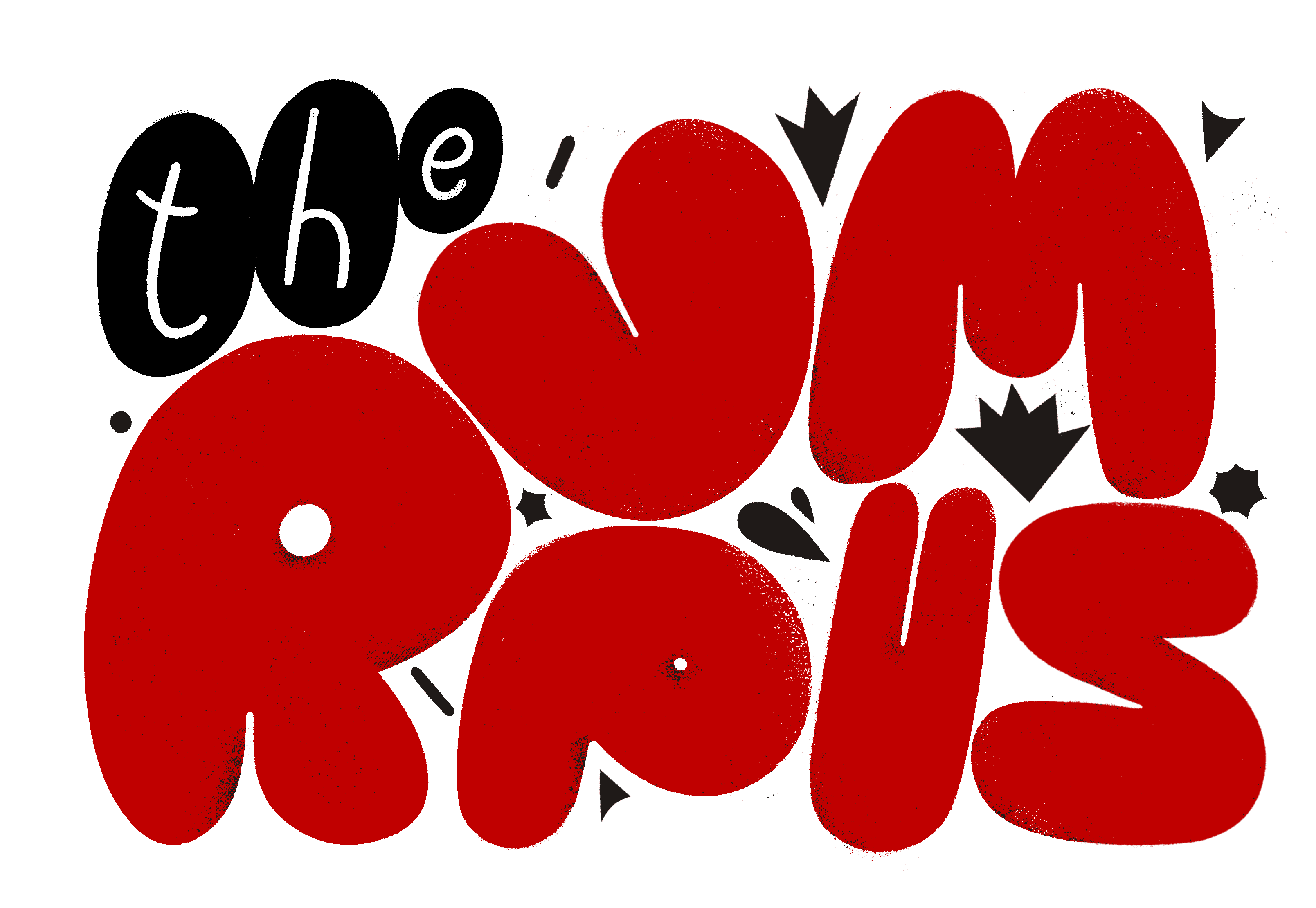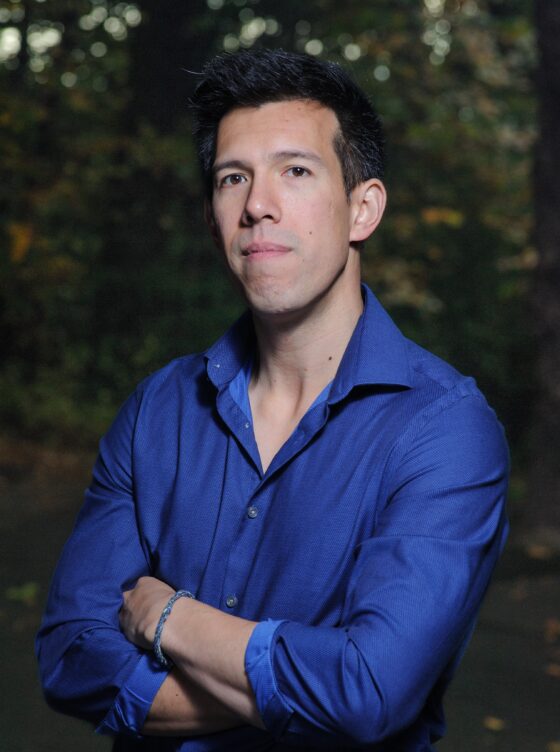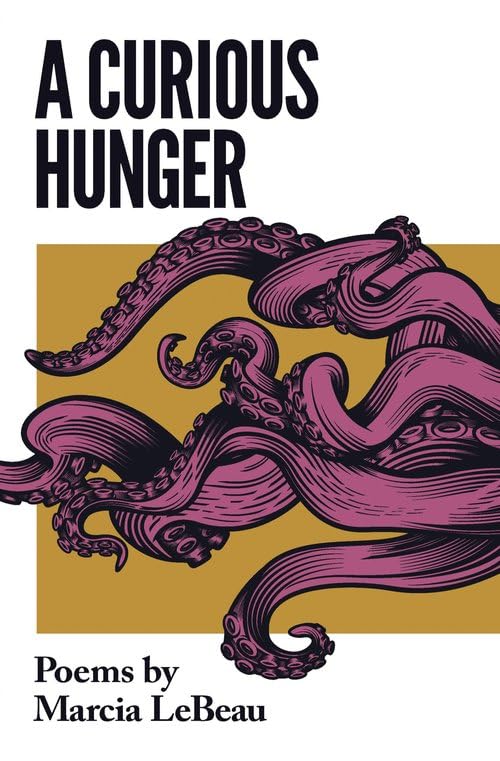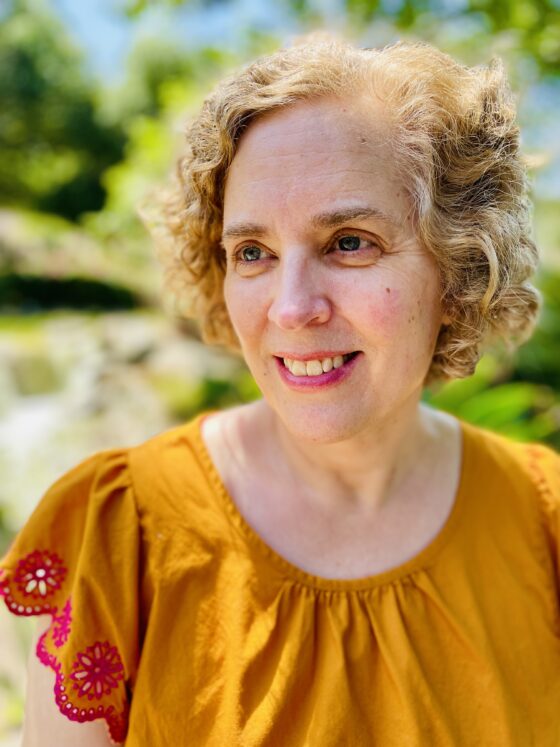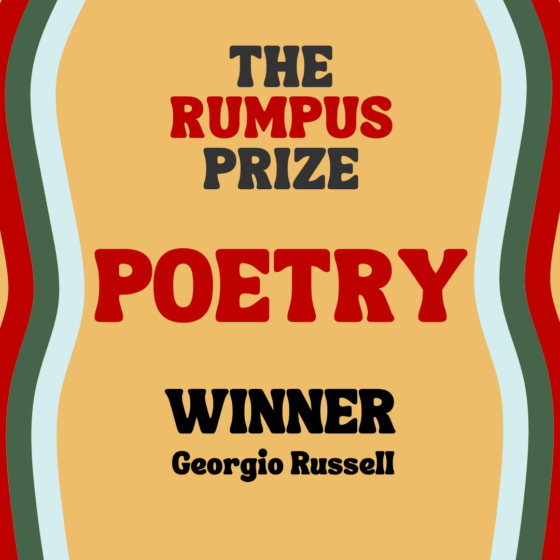
It is 1976. In the Haight-Ashbury neighborhood of San Francisco, a group walks into a park. Some are carrying a coffin, and others dance around the wooden box. Flowers droop from their hair, from their fingers, from the coffin. The hippies chant, they sing, they light the coffin in a burning moment of drug-induced symbolism.
Within the crowd is a bald-headed, bearded man. He carries a sketchpad that, if he were sitting cross-legged, would be big enough to cover his knees. He is not a reporter. “The funeral is over, but the corpse is still grooving,” he writes. The man is Shel Silverstein.
Imagining this scene, I look right past the burning coffin, the chanting, and the flowers; I focus, with surprise and awe, on the huge sketchpad that Shel Silverstein holds.
***
Now, it’s January on Martha’s Vineyard, which is to say I’m one of the few people out walking through the Camp Meeting Association neighborhood in Oak Bluffs. I am definitely the only person out walking with a pocket-sized notebook in my hand, scratching notes between furtive glances to make sure no one catches me trying to be a writer. I move between the tiny, wooden homes in Carpenter Gothic style and a Bubblicious color palette; they look like dollhouses with wooden details hanging, seductive as icing, from their peaked roofs. The homes are pushed up next to one another in a series of circular roads and pathways. I’m looking for the house that Silverstein owned and lived in, and the search is taking me on a labyrinthine walk from Butler Circle, to Rural Circle, to Forest Circle.
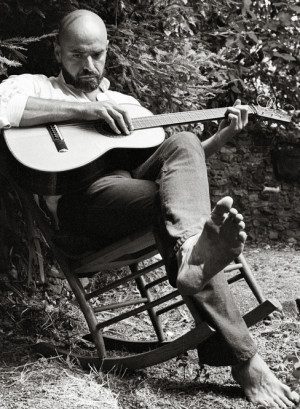 When he was not in Greenwich Village, New York; Key West, Florida; or Sausalito, California, Silverstein lived here in a home that is painted green, yellow, and orange. Forest Circle is just a footpath where twelve homes are arranged around a circle of grass that is split into four sections by a cross of paved walkway. Eleven Forest Circle is not named, does not have a plaque showing the year it was erected, and does not have a sign in the window, like many of the homes here do: No trespassing, this property inspected periodically by the Oak Bluffs police department. On the front porch, a small wooden desk sits with its legs pointing toward the sky like an overturned bug, waiting until the summer, when it will be flipped. The wooden frosting that hangs from the roof falls in half ovals that end in round drips perfect for your tongue.
When he was not in Greenwich Village, New York; Key West, Florida; or Sausalito, California, Silverstein lived here in a home that is painted green, yellow, and orange. Forest Circle is just a footpath where twelve homes are arranged around a circle of grass that is split into four sections by a cross of paved walkway. Eleven Forest Circle is not named, does not have a plaque showing the year it was erected, and does not have a sign in the window, like many of the homes here do: No trespassing, this property inspected periodically by the Oak Bluffs police department. On the front porch, a small wooden desk sits with its legs pointing toward the sky like an overturned bug, waiting until the summer, when it will be flipped. The wooden frosting that hangs from the roof falls in half ovals that end in round drips perfect for your tongue.
Around the backside of Silverstein’s house is a second-story window that looks out over the street. I stop here, the toes of my boots just touching the grass in his yard, and stare at the window. I imagine that he drew or wrote or read books by that window, and that maybe his desk was pushed up against the wall or his favorite armchair was situated for a good view from across the room. I push my toes into the grass. I feel like I’m trying to get something from the property: bravery, how to know what places inspire me, how to decide which ideas to chase. It’s not the world Silverstein documents that surprises and inspires me, it’s his relationship to it.
The day is warm for January, and the early afternoon sunlight makes straight lines between bare tree branches to the asphalt paths, forming varying stripes from here to there. Will I write about the roads, or the light? I scribble in my tiny notebook, anxious about which parts matter.
The patterns of light on the ground look like sun filtered through the stained glass of a church window. Something about the way the roads wind and narrow to footpaths reminds me of getting lost at the county fair, wandering through bleeding color on all sides until the inevitable deep-fried conclusion at the midway. This neighborhood is a gaudy combination of religious fervor and secular indulgence. Starting in 1835, ministers and seekers traveled here to live in tents for weeks of prayer and celebration. Year after year, families and congregations came to the same campsite, improving on the space with wooden walls and, eventually, complete homes. These houses look like the pressed cardboard of a snap-together dollhouse but have stood for over 100 years.
Silverstein decided which of his homes to live in during a given month by reading the signs of the world around him: which friends were around, the flavor of pudding served at nearby restaurants that week, the ratio of sunshine to wind. He was a wanderer. As someone who has lived in nine homes over the last three years, I see how something like banana-flavored pudding could move you from one place to the next. Getting up and moving is a way of proving Silverstein’s adage to myself, over and over again: “Comfortable shoes and the freedom to leave are the two most important things in life.” Moving brings our attention to the smallest things. This book or that one? Burn the desk or donate it? Who knew that many socks could collect under the bed in six months? What’s important enough to take to the next place?
***
When Silverstein was among the Haight-Ashbury hippies, watching the coffin burn, he was penning a travelogue for Playboy magazine, a project he worked on between 1957 and 1968. During those years, Silverstein traipsed around the world, bringing back cartoons from Japan, Spain, Fire Island, Alaska, Hawaii, Russia, and a Pennsylvania nudist camp. Playboy writers described Silverstein as freewheeling, shaggy, peripatetic, roving, bawdy, hirsute, and saucy.
His cartoons capture moments with only a handful of lines and, usually, ten words or less. In Alaska, Silverstein drew a cartoon of four bare bulbs sketched in precise lines. A string hangs from the metal at the base of the glass; it’s easy to imagine pulling it, in a basement or attic, to illuminate the space below. The wires that connect to the tops of the bulbs trail off into nothingness. Below the lights, which are giant-sized, stand two men in snowshoes, their path to the present marked by quick scratches of a pen, footprints in snow. Another couple dozen lines place the men in a mountain range, and illuminate their features: a hooked nose, an upturned face, plump snowsuits, shaggy hair, and beards are all clear with drawing that is sparse, a suggestion. At the bottom of the cartoon, in typewriter pressed letters: “Why, those are the Northern Lights, what did you think?”
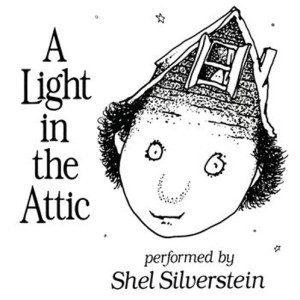 Light. This is a word I keep circling in the notebook that I pretend not to have in public. The images of Silverstein at work that appeared alongside his Playboy travelogues show him working around the world: leaning on a building in London while holding a one-by-two-foot sketchpad out before him as a policeman looks over his shoulder, seated on a donkey in Spain with the same large sketchpad resting on the animal’s back as he draws, and standing completely still in the middle of a crowded North African marketplace with the notebook resting against his belly and propped out before him with his forearm.
Light. This is a word I keep circling in the notebook that I pretend not to have in public. The images of Silverstein at work that appeared alongside his Playboy travelogues show him working around the world: leaning on a building in London while holding a one-by-two-foot sketchpad out before him as a policeman looks over his shoulder, seated on a donkey in Spain with the same large sketchpad resting on the animal’s back as he draws, and standing completely still in the middle of a crowded North African marketplace with the notebook resting against his belly and propped out before him with his forearm.
In a biography about Silverstein, author Lisa Rogak writes that when the spark of inspiration flickered, Silverstein would scribble on his own shirtsleeves or a restaurant tablecloth. My own image of him at work is a combination of these Playboy photographs, Rogak’s characterization, and Silverstein’s own cartoons. I see him with this larger-than-life notebook stretched out before him as he draws wildly, conscious but not self-conscious, aware of the eyes and noises around him, a brighter-than-bright light bulb burning overtime above his head, the pull-switch dangling just over his right shoulder where he can reach it easily with his hand.
Silverstein found inspiration all around him. People, places, and situations entered his brain to come back out in drawings, stories, and songs. It is the stories and images of Silverstein working that show so clearly his focus and attention, his commitment to his craft, a craft that wasn’t defined by genre or topic but by clarity and humor. I wish I could walk with Silverstein and ask him just one question: How do you cultivate an attention that allows you to forget your enormous notebook?
***
I wander the Camp Meeting Association labyrinth in reverse now, pausing for a moment at the Tabernacle, the site of all those prayer meetings from years ago and still the center of this community. Spindly beams hold up three graduated rooftops and a turret that ends in a point at the tip. The structure stands like a cow, a huge body on impossibly thin legs. I walk slowly back to Circuit Avenue and down a set of stairs to the coffee shop that is below street level. Inside I slide into a wooden booth across from two friends. They ask me what I’ve been up to.
“I’m chasing Shel Silverstein’s ghost,” I say. They giggle. I don’t. I pull my writer’s notebook out of my coat pocket and stick my pen through the metal loops holding the pages together. As I put the notebook down in front of me on the table, I smile to myself. I’m chasing a ghost in the sunlight on the grounds of a Christian community.
Silverstein’s ghost turns out to speak to me like Master Ichu in a story told by Charlotte Joko Beck. In the story, a student asks the master to write “something of great wisdom.” Master Ichu responds by writing, “Attention.” When the student asks if that’s all, Master Ichu writes again, this time, “Attention. Attention.”
The sixties are over, and hippies don’t exist like they used to. The Camp Meeting Association doesn’t host the same religious fervor it once did, and Silverstein’s corpse is underground. But on a near-empty island in January, Silverstein’s way of working, the history of this neighborhood, and my own attention to details have burned a fire in my brain. The corpse is still grooving.
Listen to Heidi read her essay:
